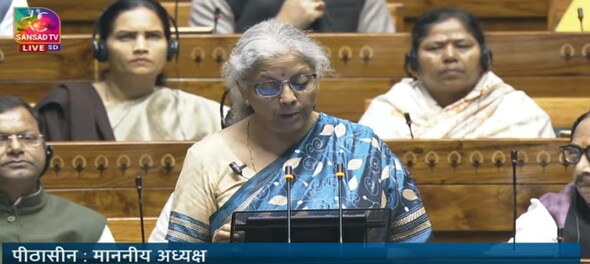
Union Finance Minister Nirmala Sitharaman presented the last budget of the the second term of current government. The interim budget, intended to ensure continuity till a new government takes charge after the Lok Sabha elections scheduled to be held later this year, unfolded as a strategic presentation for the upcoming elections.
While the parliamentary intention of a Vote-on-Account or interim budget was to secure approval for essential expenditures until a full budget could be introduced by the next government, the budget speech seamlessly wove into it — the discourse of election. The Finance Minister's address, outlining economic triumphs and future initiatives, revealed a careful alignment with the upcoming voting context. It was not merely a financial stopgap but rather a smart unveiling of the government's vision, strategically poised to resonate with the electorate as the nation approaches the ballot box.
In the run up to the elections, the interim Union Budget could have leaned towards populism, given the absence of stringent parliamentary guidelines and the limited opposition. But it did not, to the credit of the Government. To uphold parliamentary tradition during an election year, the budget presentation refrains from introducing any new policies or allocations that could be construed as efforts to please the electorate. The finance minister stuck to this.
Nevertheless, it also serves as a comprehensive assessment, scrutinising the government's achievements over the preceding decade, against the backdrop of the recent Economic Report presented by the Chief Economic Advisor.
The Finance Minister commenced the budget address by outlining the economic achievements of the Modi government. Notably, the speech began by recognising the economic challenges in 2014, underscoring the administration's resilience in rejuvenating the economy and delivering tangible benefits to the citizens.
The budget set an optimistic tone, highlighting successes in inclusion, social justice, and addressing systemic inequalities. Emphasis was placed on the government's commitment to supporting the rural economy and empowering four key segments of India's population — the poor, women, youth, and farmers. The Union Finance Minister explicitly identified the prioritised focus on these four groups—gareeb (the poor), mahilaye (women), and annadatha (farmers).
“Social justice is our governance model. This is secularism in action.”
While not strictly populist, this budget exhibits elements aligned with populism, potentially laying the groundwork for the socio-economic manifesto in the upcoming election. Initiatives such as facilitating housing for the middle class in rented accommodations, slums, or unauthorised colonies signal a commitment to diverse citizenry through newer programs or increased allocations for women, farming, and fisheries sectors.
Straying away from populist measures, the Finance Minister maintained the status quo on tax rates for both direct and indirect taxes. Providing a vision for the next five years, minister has forecasted unprecedented growth, unveiling a capital expenditure of ₹11.1 lakh crore for the next fiscal year, signifying an 11 per cent increase.
The government has persistently placed emphasis on growth strategies, evident in enhanced road connectivity, progress in transportation infrastructure, localisation of imports, the creation of value chains for electronics and electric vehicles (EVs), and the establishment of digital public infrastructure for nation-building. The interim budget underscores the government's commitment to advancing these initiatives and expressing a determination to do more in these areas.
The revised estimate of revenue receipts is expected to surpass the budgeted figures, projecting FY25 total receipts at ₹38.80 lakh crore. The Finance Minister outlined gross government borrowing at ₹14.1 lakh crore, with FY25 gross market borrowing pegged at ₹ 14.13 lakh crore and net borrowing at ₹ 11.75 lakh crore.
The interim budget speech effectively conveys a clear message for the upcoming elections, adopting a narrative characterised by a higher word count and less emphasis on numerical data. As the PM stated post the budget presentation, "this budget shows continuity & confidence," demonstrating fiscal prudence and a commitment to the government's proven fiscal strategy. The political confidence of forming the next government, as repeatedly mentioned in the FM's budget speech, sets the stage for the forthcoming election. All eyes are now on the upcoming election, as conveyed by the message from the interim budget speech.
—The author, Dr. Srinath Sridharan (@ssmumbai), is Policy Researcher & Corporate advisor. The views expressed are personal.
(Edited by : C H Unnikrishnan)
First Published: Feb 1, 2024 4:34 PM IST
Check out our in-depth Market Coverage, Business News & get real-time Stock Market Updates on CNBC-TV18. Also, Watch our channels CNBC-TV18, CNBC Awaaz and CNBC Bajar Live on-the-go!


BJP's Hindi heartland dominance faces test in phase 3 polls
May 2, 2024 9:14 PM
Lok Sabha Election: Re-elections at a Ajmer booth after presiding officer misplaces register of voters
May 2, 2024 4:54 PM

